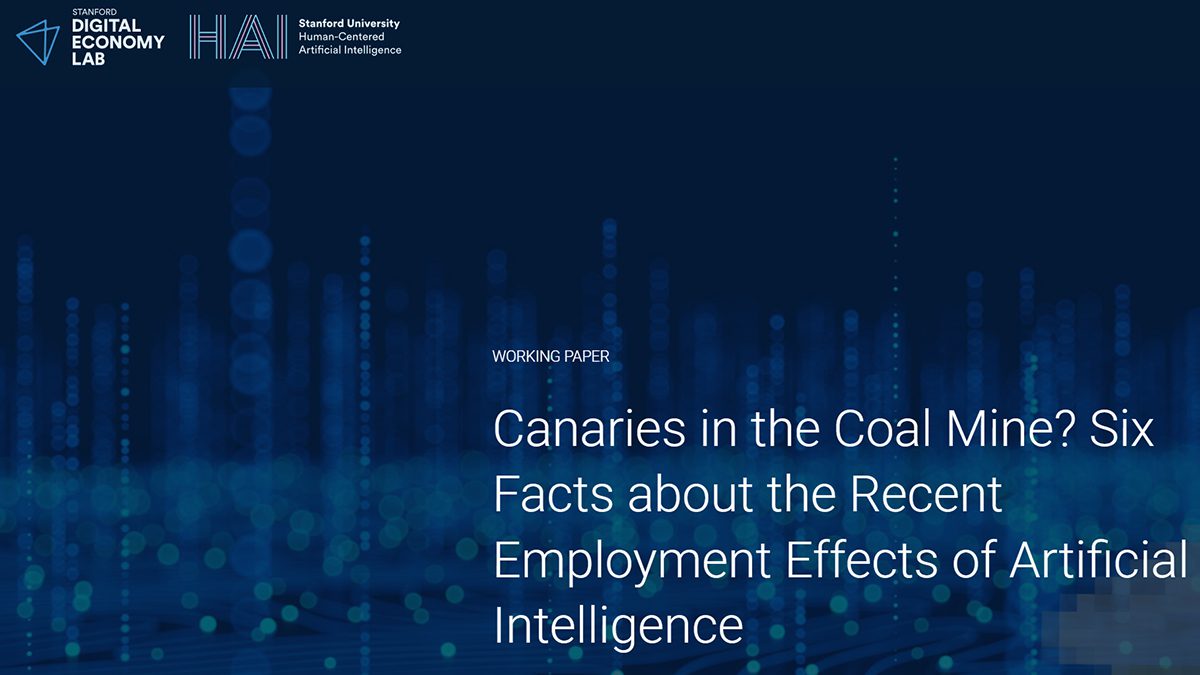The Stanford Digital Economy Lab published Canaries in the Coal Mine? Six Facts About the Recent Employment Effects of Artificial Intelligence, which found that in AI-exposed occupations, employment of 22–25-year-olds fell by 13%, even as overall employment continued to grow. The study highlights that AI’s primary impact is on labour market entry for younger workers, rather than on wages.
The authors identified six core facts. First, the employment effect is age-differentiated: while younger workers saw a decline, older employees maintained or increased their employment levels. Second, wages showed no significant differences, with changes concentrated in job availability. Third, the reduction was strongest in occupations where AI substitutes human work, not where it augments it. Fourth, the pattern persisted even after excluding industry- and firm-level shocks. Fifth, the share of new entrants fell in the most AI-exposed roles, while more experienced workers increased their share. Sixth, the results remained robust under multiple control tests, including the exclusion of tech firms and remote-work occupations.
The key conclusion is that AI reshapes labour markets not by reducing wages, but by constraining entry opportunities for young workers. The August 2025 findings serve as a “canary in the coal mine”: declining employment among younger cohorts signals that broader workforce segments may be affected as AI adoption deepens over time.
Sources:
1.

2.

3.











